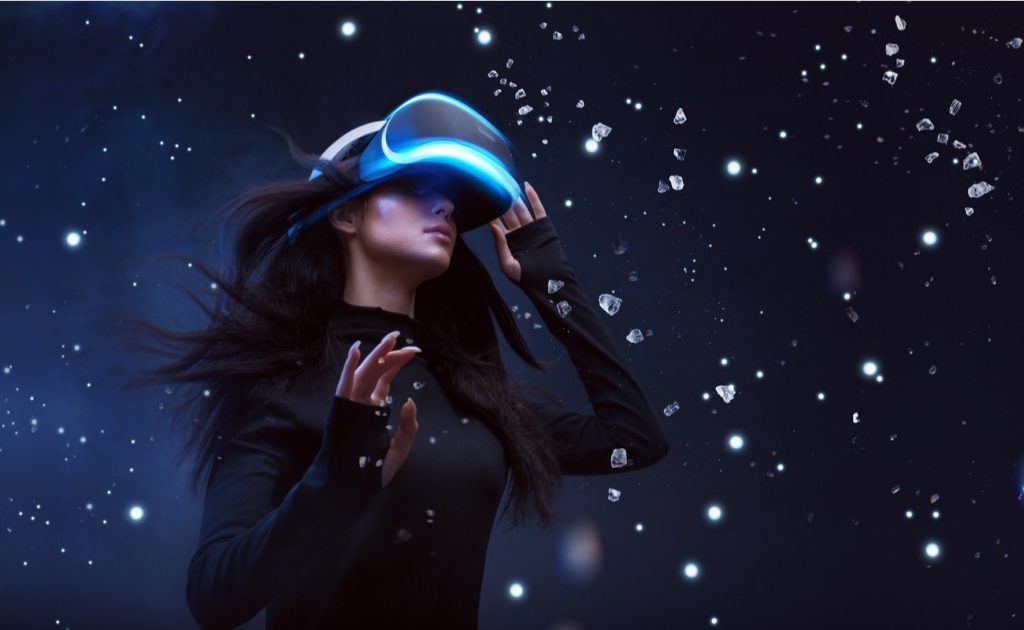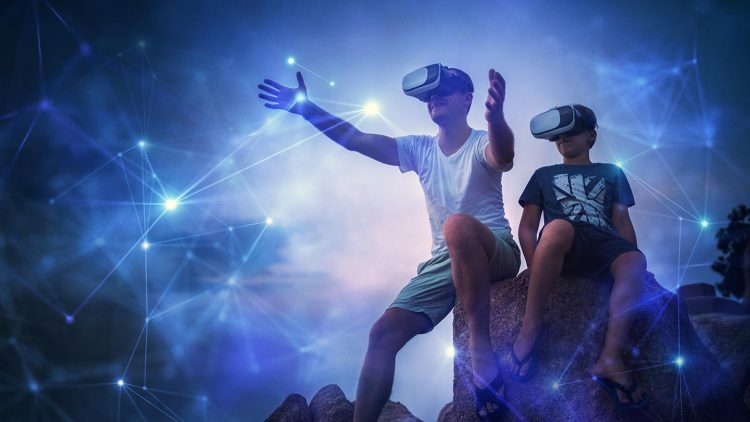Virtual Reality (VR) technology has made incredible advancements in recent years, bringing immersive experiences to users that were once the stuff of science fiction. By leveraging cutting-edge hardware and software, VR can transport users into fully interactive, computer-generated environments, providing them with a sensation of complete immersion in a virtual world. This immersive quality is arguably the most compelling feature of VR technology, and it has a profound impact on a variety of fields, from entertainment to education, healthcare, and beyond.
In this article, we will explore how VR works, the key components that contribute to its immersive nature, and the diverse applications that have been revolutionized by VR technology. We will examine how VR is used in gaming, training simulations, mental health, design, and communication, as well as discuss the challenges and future prospects of VR. The goal is to provide an in-depth understanding of how VR technology is reshaping our interaction with digital content and our perception of the world around us.
1. The Mechanics of Immersion: How VR Technology Works
1.1 Key Components of VR Technology
At the heart of the VR experience are several key components that enable users to become fully immersed in virtual environments. These components include:
- Head-Mounted Displays (HMDs): The most crucial piece of hardware for VR is the head-mounted display. These devices, such as the Oculus Rift, HTC Vive, or PlayStation VR, contain stereoscopic displays that cover the user’s entire field of vision. The HMD tracks the movement of the user’s head, adjusting the virtual environment in real-time to maintain the illusion of immersion. This enables users to look around and feel as though they are inside a 3D world.
- Motion Tracking and Sensors: VR systems use various sensors (such as accelerometers, gyroscopes, and infrared sensors) to track the movement of the user’s head, hands, and body. This real-time motion tracking ensures that the virtual environment adapts to the user’s actions, reinforcing the sense of immersion. For example, if a user turns their head to look around, the system updates the virtual world accordingly, providing a seamless and natural interaction.
- Controllers and Haptic Feedback: In addition to the visual and motion aspects, haptic feedback is a vital element in enhancing the immersive experience. VR controllers, such as the Oculus Touch or Vive controllers, often come equipped with vibration motors and sensors to simulate touch and interaction. This tactile feedback helps users feel as though they are physically interacting with the virtual world, whether they are holding an object or feeling the recoil of a virtual gun.
- Sound: Spatial audio is another crucial element of immersion. In VR environments, sound is positioned to match the virtual environment, creating a 3D audio experience. This allows users to hear sounds as they would in the real world, further enhancing the sense of presence. For example, hearing footsteps behind you in a virtual forest creates an instinctual response that increases immersion.
1.2 Real-Time Rendering and Interaction
A key factor that makes VR feel so immersive is its ability to generate real-time graphics that respond to the user’s movements. Unlike traditional media where the content is pre-recorded, VR environments are dynamic and can change based on the user’s actions. Real-time rendering, powered by sophisticated graphics processing units (GPUs), ensures that the virtual world is updated smoothly and consistently as the user moves and interacts.
Moreover, VR systems often incorporate interactive elements, such as the ability to manipulate objects, solve puzzles, or engage with other virtual characters. This interactivity deepens immersion by allowing users to feel like active participants rather than passive observers in the virtual world.
1.3 The Role of Perception: Creating a Sense of Presence
The sensation of “presence” in VR—the feeling that you are truly in another place—is created through the combination of visual, auditory, and tactile inputs. The more convincing these inputs are, the more immersive the experience becomes. The brain processes the visual cues, the sounds, and the physical feedback in such a way that users forget they are interacting with a machine, making them feel as though they are genuinely present in a different world.
A significant challenge in VR is achieving a high level of immersion without causing discomfort. Factors such as latency (the delay between the user’s actions and the system’s response), motion sickness, and visual fidelity must be carefully managed to ensure a comfortable and believable experience.
2. The Applications of VR: Revolutionizing Multiple Industries
2.1 VR in Gaming: The Ultimate Immersive Entertainment
Gaming is one of the most well-known and widely discussed applications of VR technology. The ability to step into a fully interactive 3D world has completely transformed the gaming landscape, creating an entirely new level of engagement and immersion.
2.1.1 Enhancing Storytelling in Games
In traditional video games, players control a character from a third-person or first-person perspective. In VR games, however, players literally become the character, experiencing the world from their point of view. This deepens emotional engagement and allows for more compelling storytelling. Players can interact with characters, explore vast virtual worlds, and experience events from a perspective that feels incredibly real.
For instance, games like “Half-Life: Alyx” or “Beat Saber” immerse players in environments where they must physically move, dodge obstacles, and manipulate virtual objects, increasing the intensity and enjoyment of the gameplay.
2.1.2 Social Interaction in Virtual Worlds
Some VR games have also introduced social features, where players can interact with others in shared virtual spaces. Games like “VRChat” or “Rec Room” allow players to create avatars and engage in conversations, play mini-games, or attend virtual events, fostering a sense of community in the digital realm.
2.2 VR in Education and Training: Revolutionizing Learning Environments
VR has also made significant strides in education, offering immersive learning experiences that were once impossible in traditional classrooms. By placing students in realistic, virtual environments, VR allows for experiential learning, which has been shown to improve understanding and retention.
2.2.1 Simulating Complex Scenarios
In fields such as medicine, aviation, and engineering, VR is used to create realistic simulations of complex procedures. Medical students can perform virtual surgeries to practice their skills, pilots can simulate emergency landing procedures, and engineers can test prototypes in virtual environments before they are built in the real world. This hands-on approach to learning helps reduce mistakes and enhances training efficiency.
2.2.2 Virtual Field Trips and Immersive History Lessons
VR can also be used to take students on virtual field trips to places that would otherwise be inaccessible. Imagine students experiencing the wonders of ancient Rome or walking through the surface of Mars. These virtual experiences offer a deeper understanding of history, science, and geography, making learning more interactive and engaging.
2.3 VR in Healthcare: A Tool for Treatment and Therapy
In the healthcare sector, VR is being used for both therapeutic purposes and medical training. For patients, VR offers a unique way to manage pain, reduce anxiety, and treat mental health conditions.
2.3.1 Pain Management
One of the most promising applications of VR in healthcare is pain management. VR systems have been used to help patients undergoing surgery or those with chronic pain by distracting them and immersing them in calming, virtual environments. Studies have shown that VR can reduce the perception of pain and discomfort by offering patients a mental escape from their physical ailments.
2.3.2 Virtual Reality Therapy (VRT)
Virtual Reality Therapy (VRT) is used to treat conditions such as Post-Traumatic Stress Disorder (PTSD), phobias, and anxiety. By immersing patients in simulated environments, therapists can help patients confront and manage their fears in a safe, controlled setting. VR can also be used to train patients to perform physical therapy exercises, guiding them through movements and providing feedback in real-time.

2.4 VR in Design and Architecture: Visualizing the Future
Another area where VR is making a significant impact is in the field of design and architecture. Designers and architects can use VR to create virtual prototypes of their projects, enabling clients to walk through and experience a building or product before it is physically constructed.
2.4.1 Virtual Prototyping
In product design, VR allows teams to simulate and test designs without the need for physical prototypes. This not only saves time and costs but also enables designers to make more informed decisions by experiencing their designs from every angle in a fully interactive, 3D environment.
2.4.2 Immersive Architecture and Urban Planning
For architects, VR provides an immersive way to explore and refine architectural designs. Clients can experience a virtual tour of a building or urban space before construction begins, giving them a better sense of scale, design, and layout. VR also enables architects to visualize changes to designs in real-time, streamlining the revision process.
2.5 VR in Communication: Bridging Distances
Virtual reality has the potential to change the way we communicate, enabling people to connect in more immersive and engaging ways. Video conferencing has already revolutionized remote work, but VR takes this a step further by providing virtual meeting spaces where participants can interact in 3D environments.
2.5.1 Virtual Collaboration
In a VR meeting, participants are represented by avatars, and they can interact with each other in ways that mimic face-to-face communication. This allows for more natural conversations, with participants being able to read body language and engage in group discussions as if they were physically present in the same room.
2.5.2 Social VR: A New Era of Virtual Socializing
Social VR platforms, such as Facebook Horizon and AltspaceVR, are creating virtual spaces where people can meet, socialize, and collaborate. These platforms offer a wide range of activities, from casual chats and game playing to virtual events and live performances, providing new ways for people to connect and interact.
3. The Future of VR: Challenges and Opportunities
3.1 The Challenge of Accessibility
While VR technology has made significant strides, it still faces challenges in terms of accessibility. High-quality VR systems can be expensive, and users need powerful computers or gaming consoles to run VR applications. Additionally, VR experiences can be physically demanding, with long sessions sometimes causing discomfort or even motion sickness.
Future developments in VR technology will likely focus on making VR more affordable, more user-friendly, and more comfortable to use for extended periods.
3.2 Improving Realism and Interaction
As VR technology continues to evolve, we can expect significant improvements in realism and interactivity. The integration of artificial intelligence (AI), machine learning, and haptic technology will further enhance the ability to interact with virtual worlds in a natural, intuitive manner. Future VR experiences may include more realistic avatars, more advanced hand-tracking, and better sensory feedback, all of which will make virtual worlds feel even more lifelike.
3.3 Expanding the Reach of VR
One of the key opportunities for VR is expanding its applications across different sectors. As the technology becomes more affordable and accessible, we can expect to see VR adopted more widely in fields such as tourism, sports, and even remote healthcare. With innovations in wireless technology, cloud-based VR, and 5G networks, the future of VR looks set to offer immersive experiences that are available to everyone, anywhere.
Conclusion: A Fully Immersive Future
The immersive capabilities of VR technology have already made a profound impact on a wide array of industries, from entertainment and healthcare to education and design. The ability to completely transport users into virtual worlds opens up endless possibilities for how we learn, work, and socialize in the digital age.
As the technology continues to evolve, VR will undoubtedly become even more sophisticated, offering deeper, more realistic, and more interactive experiences. Whether it’s providing immersive training simulations, enabling virtual travel, or creating new forms of entertainment, the future of VR promises to revolutionize how we engage with the digital world.











































